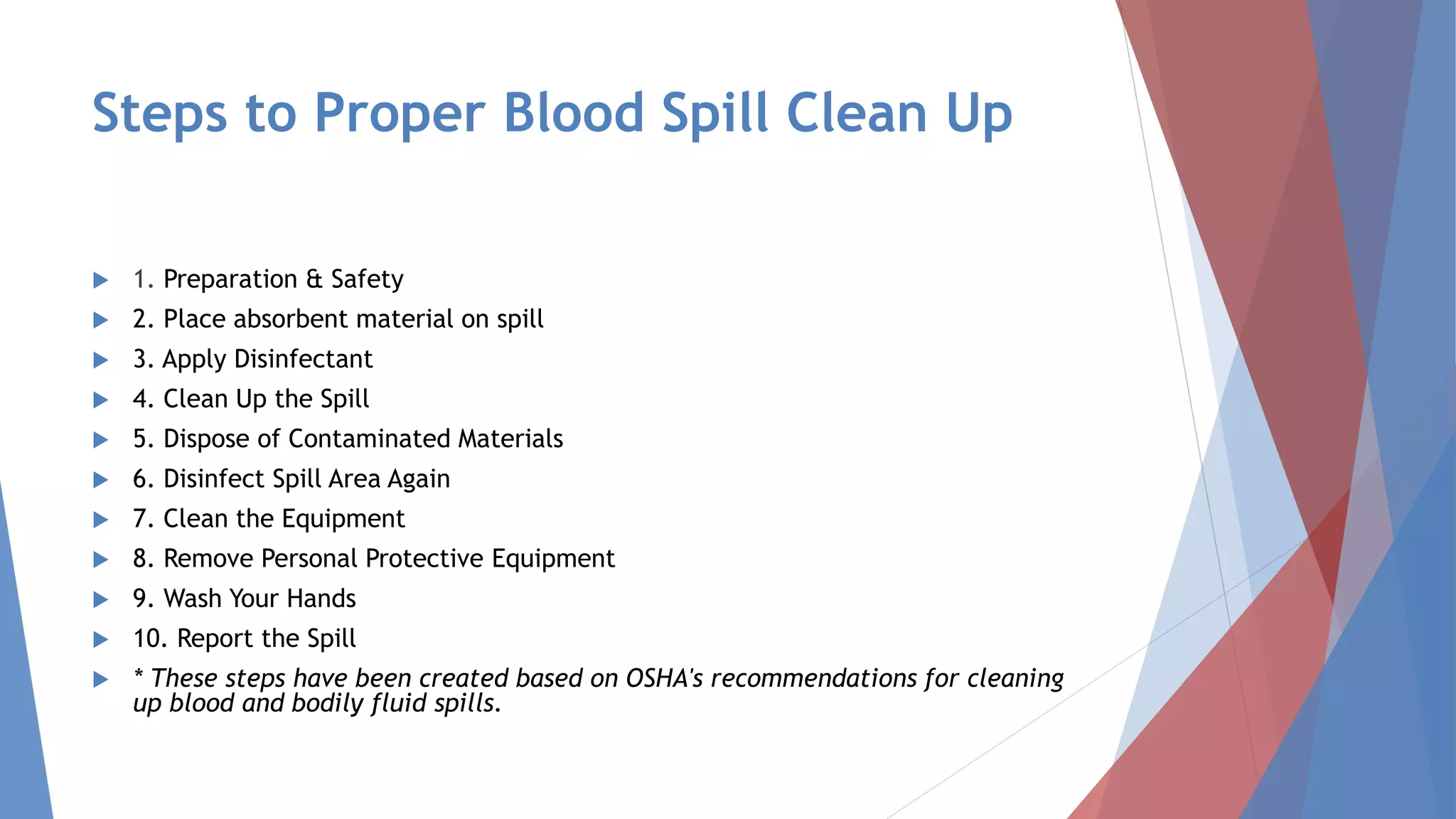This document provides guidance on handling biohazard spills. It discusses universal precautions which treat every spill as potentially infectious. Personal protective equipment like gloves and safety glasses are required for cleaning blood or bodily fluids. Proper cleanup involves 10 steps: preparation with signs and PPE, placing absorbent material, applying disinfectant, cleaning the spill, disposing of contaminated materials, disinfecting the area again, cleaning equipment, removing PPE, handwashing, and reporting the spill. Facilities must have an exposure control plan per OSHA to protect employees from bloodborne pathogens.






















